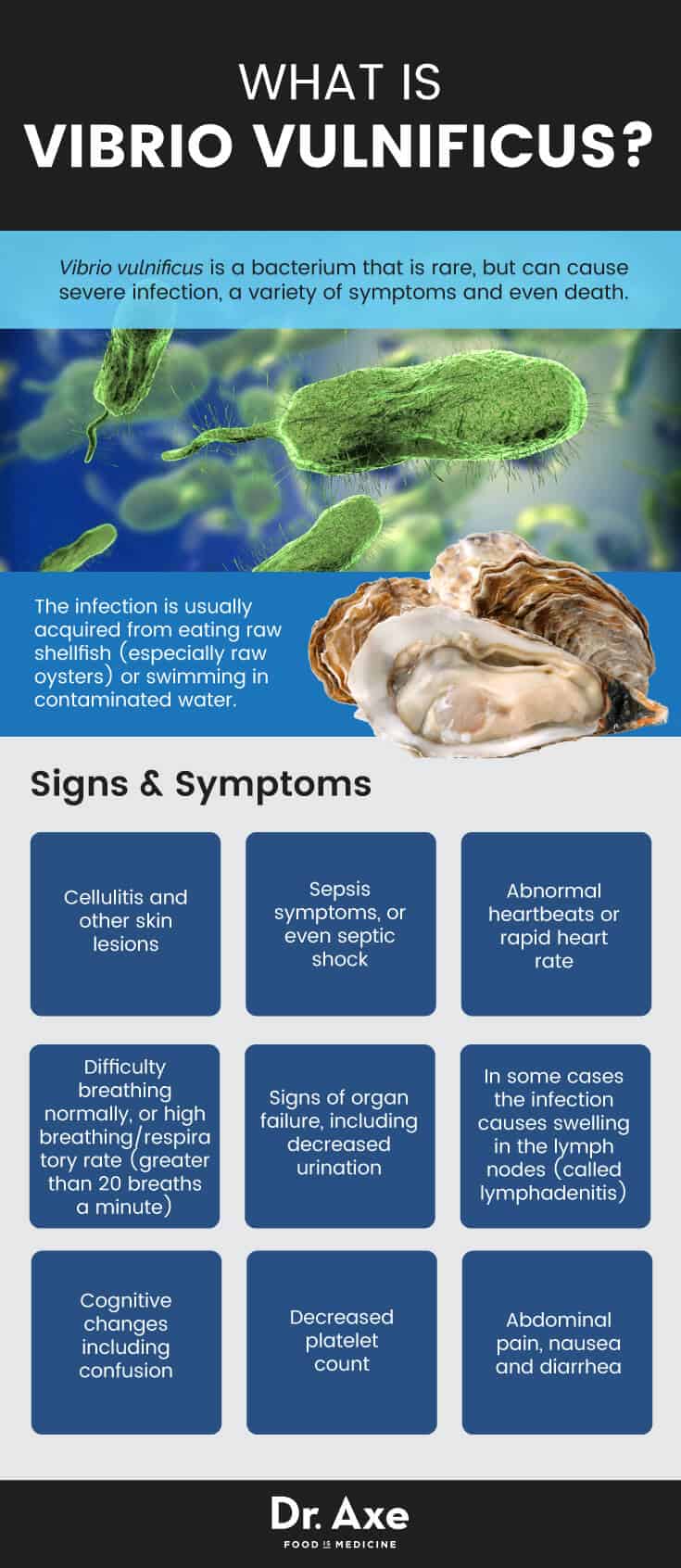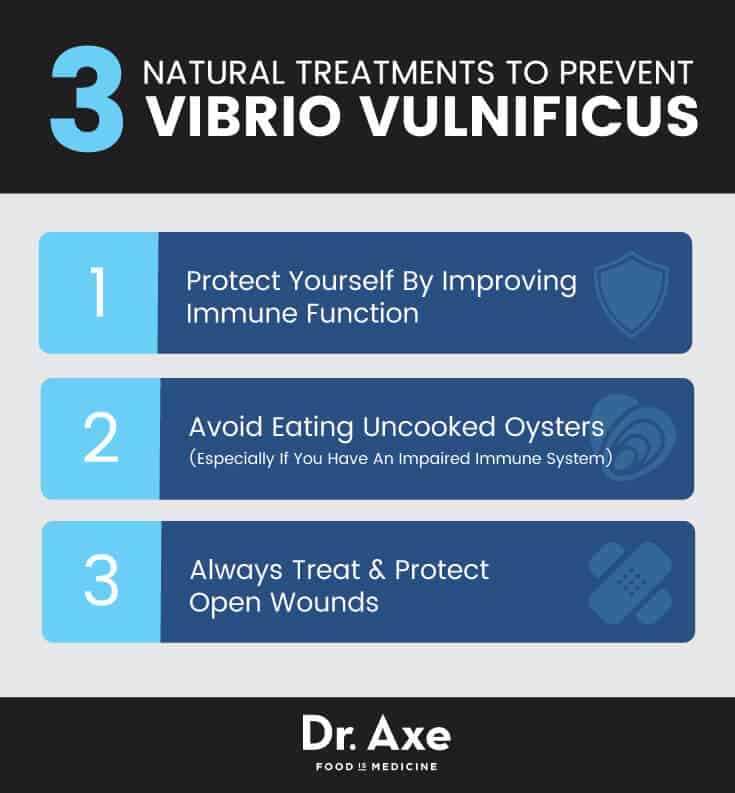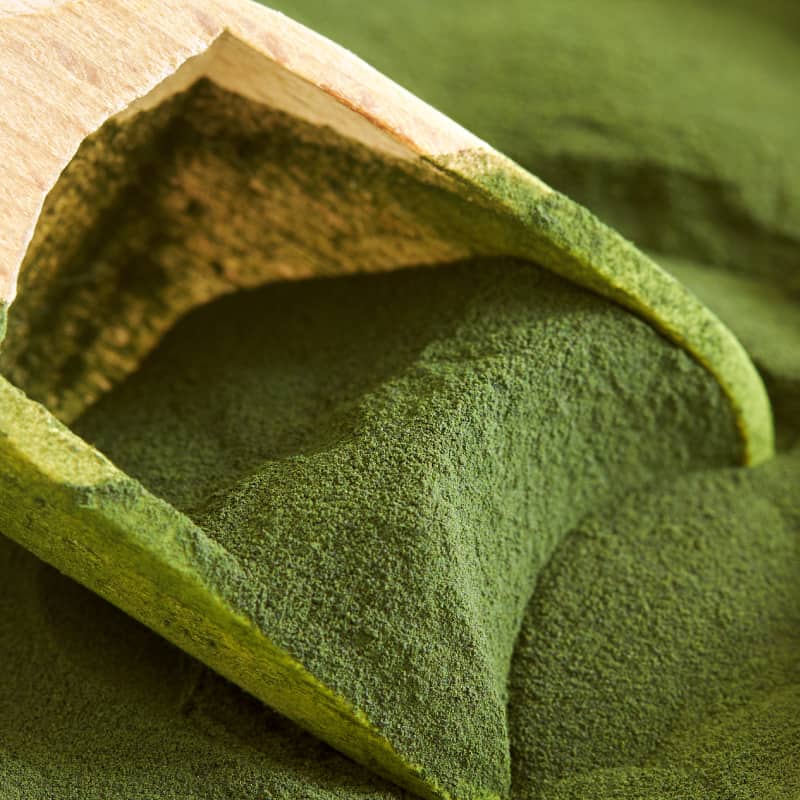This Dr. Axe content is medically reviewed or fact checked to ensure factually accurate information.
With strict editorial sourcing guidelines, we only link to academic research institutions, reputable media sites and, when research is available, medically peer-reviewed studies. Note that the numbers in parentheses (1, 2, etc.) are clickable links to these studies.
The information in our articles is NOT intended to replace a one-on-one relationship with a qualified health care professional and is not intended as medical advice.
This article is based on scientific evidence, written by experts and fact checked by our trained editorial staff. Note that the numbers in parentheses (1, 2, etc.) are clickable links to medically peer-reviewed studies.
Our team includes licensed nutritionists and dietitians, certified health education specialists, as well as certified strength and conditioning specialists, personal trainers and corrective exercise specialists. Our team aims to be not only thorough with its research, but also objective and unbiased.
The information in our articles is NOT intended to replace a one-on-one relationship with a qualified health care professional and is not intended as medical advice.
Vibrio Vulnificus Causes & Symptoms + 3 Natural Ways to Prevent It
April 12, 2017

Vibrio vulnificus causes an estimated 80,000 illnesses worldwide and 100 deaths in the United States every year. What is Vibrio vulnificus? It’s a type of serious, sometimes even deadly, infection most often caused when someone consumes raw, contaminated seafood. It’s estimated that V. vulnificus is one of the few foodborne illnesses with an increasing incidence in developed nations; it caused 41 percent more infections in 2005 (the last time incidence was evaluated) compared to ten years earlier. In 2004 alone, primary V. vulnificus infection affected 92 patients (64 of whom had severe complications), along with 28 more who had less severe wound infections due to the same bacteria.
Vibrio vulnificus is responsible for the overwhelming majority of reported seafood-related deaths in the United States. (1) According to a report published in American Family Physician, “Most patients who acquire the infection have at least one predisposing immunocompromising condition.” (2) In other words, you’re much more likely to suffer from an infection or virus if your immune system is already weakened. This could be due to health conditions or factors like having liver disease or hepatitis, being of very old age, having recently stayed in the hospital, healing from a surgical wound or injury, or relying on intravenous catheters or breathing tubes.
Unfortunately, cases of V. vulnificus infection are associated with high rates of morbidity and mortality. What are some vibrio vulnificus warning signs or symptoms that patients develop most often? These include sudden changes in breathing rate, shortness of breath, rapid or irregular heartbeats, impaired cognitive functioning, and severe abdominal pains or other digestive issues.
What Is Vibrio Vulnificus?
There are two types of scenarios that lead to vibrio vulnificus infection. One is much more common than the other.
- The majority of “primary” infections are due to consuming raw or undercooked seafood, especially raw oysters. These have been associated with more infections than any other type of seafood. Primary infections are more serious and deadly than the other type, a wound infection. It’s estimated that 50 percent of cases of primary septicemia infection from this bacteria are fatal.
- The second type of vibrio vulnificus infection affects the skin by entering the body through an open wound. Bacteria can enter an exposed wound when someone swims in warm seawater that has high concentrations of V. vulnificus bacterium. Fatality rates are around 15 percent for wound infections.
A high percentage of people who acquire a primary vibrio vulnificus infection develop the condition called sepsis. This is a life-threatening complication that affects tissues and blood. Some also develop severe cellulitis symptoms shortly after being infected, including a severe, red skin rash. (3) Other complications can include development of ecchymoses and bullae.
Vibrio vulnificus is a bacterial species that is part of the Vibrio genus and the Vibrionaceae family. It’s related to other bacteria that cause infections. These include V. cholerae and V. parahaemolyticus, which cause gastrointestinal illness that lead to severe diarrhea. V. vulnificus infection is extremely serious compared to infections caused by other bacteria in the same family. According to the Centers for Disease Control (CDC), it’s estimated that the overall case-fatality rate for V. vulnificus infection, even when someone is treated right away with aggressive medications or care, is still between 30 to 40 percent. (4)
Common Signs and Symptoms of Vibrio Vulnificus
The most common vibrio vulnificus symptoms include:
- Cellulitis and other severe skin lesions. These can include painful, rapidly progressive “hemorrhagic bullae” (blisters that appear when fluid is trapped under a thin layer of skin). Cellulitis is “an acute infection of the dermal and subcutaneous layers of the skin.” Once the bacterial infection enters the skin, it sometimes spreads quickly as bacteria penetrate deeper to tissues below the surface, causing worsened symptoms. Symptoms include skin redness, pain and tenderness, along with the formation of painful blisters. Some with severe cellulitis also develop large, inflamed abscesses below the skin’s surface or symptoms of a fever, such as chills and weakness. The biggest risk is associated with bacteria spreading into the bloodstream and then to the vital organs, such as the heart or lungs.
- Sepsis symptoms. These include fever or abnormal body temperatures either above 101 F (38.3 C) or below 96.8 F (36 C). Depending on how severe sepsis is, many other symptoms or complications can also develop, including those listed below.
- Abnormal heartbeats or rapid heart rate (above 90 beats per minute)
- Difficulty breathing normally, or high breathing/respiratory rate (greater than 20 breaths a minute)
- Signs of organ failure, including decreased urination
- Cognitive changes including confusion
- Decreased platelet count
- Abdominal pain, nausea and diarrhea
- In some cases the infection causes swelling in the lymph nodes (called lymphadenitis). It can also cause damage and inflammation of the blood vessels in the lymphatic system (called lymphangitis).
- The most severe type of sepsis, called septic shock, also causes extremely low blood pressure and dangerous changes in fluid/electrolyte levels that are hard to treat. When septic shock is deadly, patients typically pass away within 48 hours of becoming infected.

Vibrio Vulnificus Causes and Risk Factors
V. vulnificus results in a severe, fulminant systemic infection. V. vulnificus can make its way into the body and bloodstream and cause infection when carried on raw seafood or when entering through an opening in the skin. An estimated 75 percent of cases are caused from raw seafood consumption. This makes it much more common than wound/skin infections. Wound/skin infections account for about one-quarter (25 percent) of Vibrio vulnificus infections.
There are several significant risk factors for developing V. vulnificus infection. Those who are most likely to become infected with V. vulnificus include:
- Those who have eaten raw or undercooked seafood, especially raw oysters. In smaller amounts the bacteria has also been found in a variety of other seafood, including shrimp, fish and clams.
- Raw oysters harvested in the Gulf of Mexico during the summer are associated with the highest risk. In case you’re wondering, you won’t be able to taste, smell or see the presence of this bacteria on seafood (taste, appearance and odor of seafood are not obvious). Proper cooking methods usually kill V. vulnificus bacteria easily. Because of this, raw seafood is the threat as opposed to thoroughly cooked seafood.
- Anyone who has been swimming in warm seawater. This includes most coastal waters of the United States. V. vulnificus bacteria is most common in warm seawater with temperatures above 68°F (20°C). Although you should still avoid swimming in contaminated water, this organism has not been found to be associated with pollution or fecal waste in water.
- People most often acquire this infection after being in contaminated seawater when they have an exposed, open cut in their skin. In many cases, the patient was participating in water activities when infected. These activities can include: boating, fishing, diving or swimming. Cuts or wounds in the skin that can increase the risk for infection include those due to: injuries that cause bleeding/scabbing, recovering from fractures, post-surgery after an incision has been made, from burns to the skin, or following fungal infections.
- Rarely, infections can also be attributed to contact with raw seafood or marine wildlife, rather than eating the seafood or swimming in open water.
- Anyone with immunocompromising conditions are at a much higher risk for infection. This includes those who have: hepatitis B or C, chronic liver disease, alcoholism, diabetes, an autoimmune disorder like lupus, or kidney/renal disease.
- Liver disease is highly correlated with elevated risk for V. vulnificus infection.
Conventional Treatment for Vibrio Vulnificus
Considering the seriousness of V. vulnificus infections, treatment is taken very seriously and needed right away after symptoms appear. Conventional treatments for V. vulnificus infections include: antibiotics (typically therapy using combined cefotaxime and minocycline), aggressive wound therapy, and correction of any complications that might have developed (such as changes in fluid levels). The prognosis depends on age, previous health history, overall health status, how quickly the diagnosis is made, and how severe complications have become (such as sepsis). (5)
- Antibiotic treatment used to control the infection depends on the individual case. Some research shows that combined therapy with cephalosporin or ampicillin and an aminoglycoside, along with appropriate surgical therapy, is the most effective, fast-acting treatment. (6)
- In the case of wound infection, a patient’s doctor may choose to open and drain the infected abscess below the surface of the skin to relieve fluid or pus buildup and lower swelling. Drainage is used most often when the infection is very severe. For example, it’s used when it causes cellulitis complications. These include: violaceous bullae (fluid-filled sacs below the skin that cannot drain), hemorrhaging, blood pressure changes, severe swelling, etc.When edema, blisters or abscess formations become very bad, the patient is normally kept immobile in the hospital for a period of time.
- In the case of infections that cause sepsis, the patient will typically be admitted to the hospital right away, usually to the intensive care unit (ICU). Antibiotics will be intravenously administered to the patient, usually along with a great deal of fluids intravenously. If blood pressure is too low, then medication will be given to increase it. Oxygen may be given as well, or if lung failure is a concern, a breathing machine will be used. If there is kidney failure present, then dialysis is a common conventional treatment.
- Although antibiotics are normally capable of controlling symptoms including cellulitis symptoms, for example, by helping to stop the infection from spreading further or deeper into the layers of the skin, increasingly they’re not always a reliable treatment option due to antibiotic resistance.

3 Natural Treatments to Prevent Vibrio Vulnificus
1. Protect Yourself By Improving Immune Function
Because the majority of people who acquire this infection have a compromised immune system before becoming infected, it’s critical to see a doctor right away for diagnosis and rapid treatment if you know you’re susceptible.
When it comes to protecting yourself from all types of bacterial infections — including V. vulnificus, or others, like staph infections and cellulitis — it’s key to prevent the infection from developing in the first place. Even if two people consume the same food or swim in the same water, it’s not guaranteed that both will develop the infection. Those with better protection against infections might avoid becoming sick. This is because their immune system is able to control how much the bacteria continue to reproduce once inside the body or skin.
Although being at an increased risk doesn’t necessarily you’ll mean become infected. Several conditions that can weaken someone’s immune system and raise the risk for many different viruses and bacterial infections include:
- Having one of the health conditions described above, such as liver disease, or even an autoimmune disorder, such as lupus, diabetes, leukemia and HIV/AIDS.
- Being very stressed, either physically or emotionally.
- Being obese.
- Taking corticosteroid medications.
- Smoking cigarettes and using drugs.
- Having high exposure to environmental toxins or pollutants.
- Frequent use of antibacterial products and antibiotic medications can prevent our immune systems from learning how to defend us against invaders.
Ways to lower your risk for infections, viruses and other problems related to immunosuppression include:
- Increase immunity with a healthy, anti-inflammatory diet.
- Avoid toxins or unnecessary prescriptions/drugs that can weaken your immune system.
- Avoid contact with other people, surfaces, water or equipment that might be contaminated.
- Keep your skin clean by practicing good hygiene, especially if you have any open cuts, or are healing from surgery or an injury.
- Shower and wash your clothes after being in a high risk setting like the hospital, a gym, public pool or fitness facility.
2. Avoid Eating Uncooked Oysters (Especially If You Have An Impaired Immune System)
If you do have any condition that raises your susceptibility to infection, avoid eating all raw or undercooked seafood. Cooking shellfish (boiled, steamed or fried)at least 3-10 minutes can greatly reduce bacteria levels. Pregnant women, the elderly, children and others who are at higher risk for infection should do the same. Food workers who handle raw seafood can protect themselves by wearing gloves when handling raw oysters or shellfish.
Although not necessarily related to infections, there are other reasons I recommend avoiding certain types of seafood and shellfish. Shellfish is one of the leading causes of food allergies in adults and is a common cause of food-induced anaphylaxis. With increasing international trade of seafood, higher levels of production and consumption has been accompanied by more frequent reports of adverse health problems among consumers and processors of seafood. Research shows that contaminants often generate adverse reactions to seafood, but can also be mediated by the immune system and cause allergies.
3. Always Treat & Protect Open Wounds
Whenever someone has an open wound, it’s highly recommended that they avoid exposure to warm seawater. They should also protect their skin in other ways (including practicing good hygiene). Bacteria that cause infections like V. vulnificus enter the skin through open cuts or wounds. Then they reproduce rapidly once making their way into small, enclosed pockets within certain tissue where they can quickly proliferate. This is how severe cellulitis develops.
Skin rash symptoms develop due to the body’s inflammatory response (the body trying to protect itself from fighting the bacteria). Rash symptoms can occur as well as from irritation and swelling caused by the growth of bacteria below the skin. Wash any wound that is exposed to seawater with soap and clean water. If you have a cut in the skin be sure to inspect the wound for any signs of infection while it heals. Keep all cuts covered with a bandage, and apply ointment to help with healing. Follow directions your doctor has given you if you’re healing from surgery or an incision. This includes avoiding swimming in open water until you’re healed.
Precautions Regarding Vibrio Vulnificus Treatment
Because Vibrio vulnificus symptoms can get worse very quickly, and potentially even lead to deadly complications within a short time period, prompt attention and treatment of the infection is very important. If you’ve been swimming in potentially contaminated water, or have recently consumed raw seafood when you notice unusual symptoms or signs, always seek emergency care right away to prevent permanent damage or spreading.
Final Thoughts on Vibrio Vulnificus
- Vibrio vulnificus is a bacterium that is rare but can cause severe infection, a variety of symptoms and even death.
- The infection is usually acquired from eating raw shellfish (especially raw oysters) or swimming in contaminated water.
- Prevention and treatments for Vibrio vulnificus infection include: antibiotics when needed (usually administered right away), skin surgery or wound therapy if needed, avoiding eating uncooked seafood/shellfish, and protecting cuts or wounds when they’re healing.










